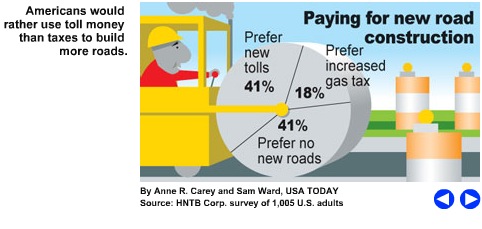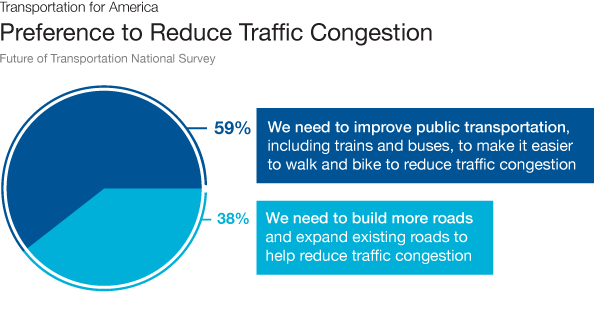 |
| I-5 Repair Originally uploaded by WSDOT to Flickr. |
In the midst of the fervor about the House’s budget resolution for 2011 released Friday, and the President’s budget proposal for 2012 dominating the news today, a new bipartisan poll from the Rockefeller Foundation contains compelling arguments from a majority of Americans in favor of increased and accountable investment in transportation.
The poll shows unequivocally that voters from across the political spectrum are tired of bickering and want Congress to seek compromise. And almost nowhere else is their desire for cooperation and solutions greater than with the issue of transportation infrastructure.
Americans largely see investments in transportation as a way to improve the economy and make communities safer, while improving the quality of life for more people. They clearly see a need for reform when it comes to paying for and choosing the transportation projects we need, according to the results.
This poll shows that we believe strongly that providing a safe transportation systems that works is a primary role of our government, and that it should be above partisan divisions, more than most other issues. The Administration’s budget proposal, released this morning, also delivers on the desire reflected in the poll to prioritize the maintenance of what we’ve already built, and for giving local communities more say in how they solve their transportation issues and build for the future.
It’s fitting that the release of this poll is sandwiched between the House’s 2011 plan to gut transportation spending and the Administration’s 2012 plan to invest more money in transportation (within a budget laced with overall cuts). This poll makes it abundantly clear that the House 2011 budget resolution – which would cut support for communities that want better public transportation and safer streets — is at dramatic odds with the desires of a majority of Americans.
Here are some of the detailed top-line findings from the poll:
Should Congress find some way to work together on the issue of transportation? 71 percent of voters say there should be common ground on this issue — higher than other major issues — while 19 percent say leaders should hold fast to their positions, which is lower than other major issues.
The connection between investing and building the economy: Four in five (80 percent) voters agree that federal funding to improve and modernize transportation “will boost local economies and create millions of jobs from construction to manufacturing to engineering.” Just 19 percent disagree with this. 79 percent agree that “in order for the United States to remain the world’s top economic superpower, we need to modernize our transportation infrastructure and keep it up to date.” Only 19 percent disagree.
What should greater investment on transportation net us in the end? What would the benefits be? Voters’ top goal by far is “safer streets for our communities and children.” 57 percent say this should be one of the top-two priorities if more money is invested in infrastructure. The second-highest priority for voters overall (32 percent) is “more transportation options.” In addition, 85 percent agree that “spending less time in traffic would improve quality of life, make communities safer, and reduce stress in people’s daily lives.” Moreover, the vast majority also believe the country (80 percent) and their own community (66 percent) would benefit from an expanded and improved public transportation system.
What should we change about how we invest money in transportation? Two-thirds of respondents favored 9 of 10 reforms offered, with 90 percent supporting more accountability and certification that projects are delivered on time and fit into a national plan. Among the specific reforms to the system that were proposed, 86 percent supported a “fix it first” policy that focuses on maintaining existing transportation systems before building new ones.
This poll was conducted by two Republican and Democratic polling firms from Jan. 29-Feb 6 2011. Disclosure: T4 America is a grantee of the Rockefeller Foundation.









